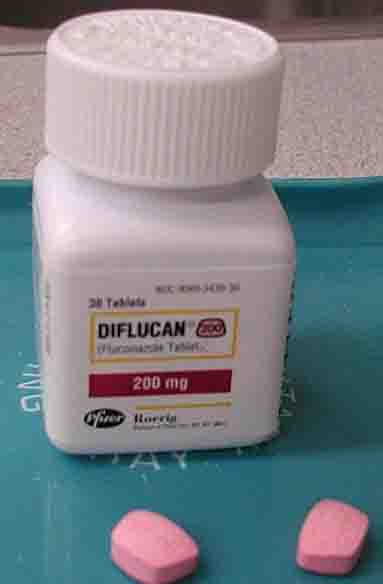Summary:
"The normal flora in a dog naturally consists of canine canidida (Candida albicans), which is classified as a yeast and fungus. In healthy dogs, bacteria naturally found in dogs keeps the yeast population at levels that are not harmful to the dogs. In rare cases, such as in dogs that have an immune system or medical issue, the yeast can start to colonize and grow in quantities that becomes more and more difficult for the bacteria that keeps the yeast under control to do its' job. The yeast overgrowth starts in the intestinal tract or enters through the skin, causing irritation and possibly infection. Underlying causes include allergy, reaction to a medication such as antibiotics or diabetes. The condition can be found on the skin, ears, mouth, heart (pericarditis) and as a bladder infection (cystitis). Treatment options range from eliminating the underlying cause, directly treating the yeast or fungal issue and if the problem occurs regularly, dietary supplements."
Causes of Dog Candida
Canine candida is a yeast that normally lives in the body and the intestinal tract of dogs. In a healthy body, it's controlled by a properly-functioning immune system and "friendly" bacteria. Without the active support of these friendly bacteria, yeast undergoes a change from a non-invasive and sugar-fermenting organism to an invasive and mucus damaging organism. This is the start of a primary yeast infection. A secondary yeast infection occurs when yeast penetrates skin that has already been damaged by scratching, injury or burns.Fungal infections of the lower urinary tract can pose significant therapeutic challenges with Candida as the most common cause in dogs.
Canine candida infections can also be a reaction to the use of antibiotics or allergy. In rare cases a dog may experience lethargy or joint pain.
There is high incidence of seeing diabetes melitus in dogs with a candida or fungal infection in the digestive tract. It occurs in the urinary tract in dogs that retain urine. IV Catheters can also introduce the infection into the bladder.
Candidiasis Symptoms
Symptoms of canine candida infection include white cheesy substance in the skin tissue, crusty patches on skin, itchy skin, and smelly skin. Part of the body or all of the body can be affected. Warm, moist areas are most likely to be affected, such as under skin folds, inside the ears, around the eyes or the anus.Symptoms of canine candida, such as a rash on the face or feet are sometimes misdiagnosed as allergy. Other signs can include:
- bad breath
- smelly bowel movements
- indigestion
- constipation
- ear discharge
- skin rash
- joint pain
- itchy eyes
- eye tearing
- discolored skin
- oily skin
- itchy feet
Diagnosis
Your vet can probably diagnose a yeast infection just by looking at it. If there is a question, he or she can use a moistened cotton swab to remove some of the yeast or can take a scraping of the skin to examine under a microscope to confirm the diagnosis. The Vet will be looking for fungi and mycoplasma (a type of bacteria without walls).Treatment
Treatment can be topical, oral, or both. Usually topical treatment by itself is not sufficient, but since oral treatment is expensive, sometimes vets will try topical treatment alone if only small areas on the dog are affected.An anti-yeast shampoo is usually prescribed. Your dog will need to be bathed twice a week and the shampoo left on for 15 minutes before he is rinsed off. If only a small area is affected, though, you may not need to bathe your dog. Medicated wipes are available and you can just clean the affected area.
Oral medication is generally prescribed as well. The preferred drug is Fluconazole. It must be taken for several weeks. As mentioned earlier, it is an expensive drug, but is very effective and therefore highly recommended.

The Dog Candida Medication Fluconazole is the medication of choice. If the medication does not work, the Itraconzole is used instead.
Source: Washington State University
In other cases, it is caused by antibiotics, or by too much sugar in the dog's diet (don't feel your dog sugary snack foods), or illness. Recent research has shown some success with injections of the medication 1% clotrimazole solution.
The condition should be fully cured in 2 to 4 weeks.
Natural Treatment Options
A natural approach to health is better than choosing medication. Effective ways of preventing yeast infection include a healthy, balanced and nutritional diet, avoiding commercial dog foods, and keeping the dog dry whenever he gets wet. Switching to a starch-free, low carbohydrate diet will also minimize the sugars that feed the yeast.Holistic veterinarians also recommend coconut oil at the dose of 1 teaspoon per 10 pounds of body weight (1 tablespoon per 30 pounds). Mix with the dog food and provide clean water. Do not provide too much of the oil due to side effects such as diarrhea.
If the dog candida is causing urinary tract infections consider a herbal dietary supplement designed to promote urinary tract, bladder while strengthening the immune system. Consider PetAlive UTI-Free which is made for this purpose.
If your dog is suffering from infections on the skin, having problems with its coat or infection around the ear consider a supplement that contains Equisetum arvense (Horsetail - also good for urinary tract health), Taraxacum officinalis (Dandelion) and Arthrospira platenis (Spirulina). A supplement combines these ingredients and is made to help support the skin is Skin and Coat Tonic.
Consult with your veterinarian so that he or she can track any progress to see if supplementing your dog's diet makes sense.
No comments:
Post a Comment